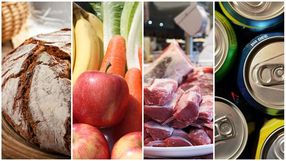Why bitter makes you sour
Advertisement
In the stomach, so-called parietal cells are responsible for acid production. They react not only to the body's own messenger substances, but also to bitter-tasting food components such as caffeine. A research team from the Leibniz Institute for Food Systems Biology at the Technical University of Munich has now carried out a study on a human stomach cell line. Their results help to clarify the molecular regulatory mechanisms by which bitter substances influence gastric acid production.
It is known that taste receptors for bitter substances are not only found on the tongue, but also on the surface of other tissues and cells. These include the parietal cells of the stomach, which secrete protons into the stomach - i.e. produce stomach acid. Recent studies have already shown that the bitter receptors found in parietal cells are involved in the regulation of gastric acid release. However, the molecular signaling pathways through which this occurs are not yet fully understood.
Stomach cells as a test system
In order to find out more about the molecular interaction between bitter substances, bitter receptors and gastric acid production, a research team led by Veronika Somoza, Director of the Leibniz Institute in Freising, has carried out a study on a cellular test system. This involves human parietal HGT-1 cells, which are able to secrete protons and, like taste cells, have bitter receptors.
Veronika Somoza's team initially developed a working hypothesis based on the results of previous studies and the findings on signal transduction pathways in taste cells. According to this hypothesis, bitter food ingredients stimulate bitter receptors that are embedded in the cell membrane. This releases calcium ions within the cells, which lead to the opening of ion channels. This in turn allows sodium ions to flow into the stomach cells from the outside, which ultimately contributes to the release of protons.
Hypothesis confirmed
First author Phil Richter explains: "We have successfully tested this mechanism with the two bitter substances caffeine and L-arginine. As expected from previous study results, both food ingredients were shown to stimulate gastric cell proton secretion in our test system." The PhD student adds: "What is new is that we have now been able to demonstrate for the first time that the transient receptor potential channelsM4 and M5 are involved in the signaling cascade not only in taste cells but also in gastric cells and ensure an influx of sodium ions into the cells."
Senior Scientist Gaby Andersen adds: "By using knock-out experiments, in which we specifically switched off one type of bitter receptor in the test cells, we were also able to show for the first time that there is a link between bitter receptors and the activation of the ion channels." The scientist emphasizes that the results not only contribute to a better understanding of the role of taste receptors in the stomach, but also show that HGT-1 cells could be suitable as a replacement model for taste cells.
The research team agrees that the results will provide new insights into the regulation of gastric acid production and thus lead to innovative approaches in the treatment of gastric diseases in the long term. However, further studies are required to deepen knowledge of the molecular regulatory mechanisms and intracellular signaling pathways.
Note: This article has been translated using a computer system without human intervention. LUMITOS offers these automatic translations to present a wider range of current news. Since this article has been translated with automatic translation, it is possible that it contains errors in vocabulary, syntax or grammar. The original article in German can be found here.
Original publication
Phil Richter, Gaby Andersen, Kristin Kahlenberg, Alina Ulrike Mueller, Philip Pirkwieser, Valerie Boger, Veronika Somoza; "Sodium-Permeable Ion Channels TRPM4 and TRPM5 are Functional in Human Gastric Parietal Cells in Culture and Modulate the Cellular Response to Bitter-Tasting Food Constituents"; Journal of Agricultural and Food Chemistry, Volume 72, 2024-2-20



































































